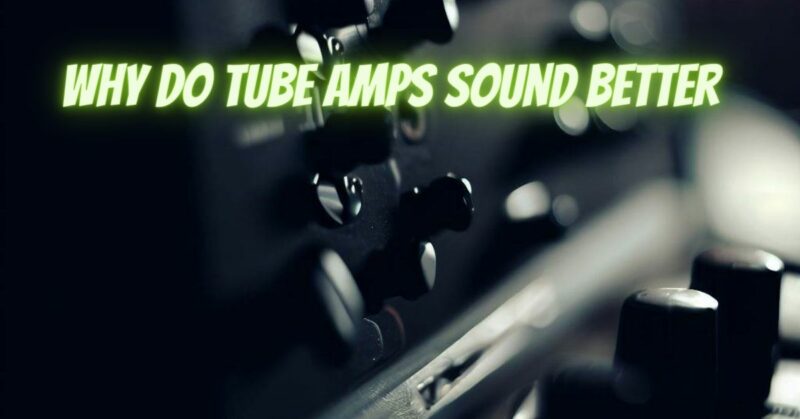In the realm of audio equipment, the tube amplifier stands as a revered icon, captivating audiophiles with its distinct sound and warm, analog character. The question of why tube amplifiers consistently deliver a superior sound quality has intrigued enthusiasts for decades. This article delves into the inner workings of tube amplifiers, uncovering the reasons behind their superior sound and the unique auditory experience they provide.
Understanding Tube Amplifiers: Tube amplifiers, also known as valve amplifiers, employ vacuum tubes to amplify audio signals. These tubes, often associated with vintage electronics, have withstood the test of time due to their ability to produce a lush and engaging sound quality.
Characteristics of Superior Sound:
- Harmonic Distortion: Unlike solid-state amplifiers, which aim for minimal distortion, tube amplifiers introduce a certain amount of harmonic distortion. This distortion can add a pleasing warmth and richness to the audio, contributing to a more natural and organic sound.
- Even-Ordered Harmonics: Tube amplifiers tend to produce even-ordered harmonics, which are considered more musically pleasing to the human ear. This contributes to the perception of a smoother and more harmonically rich sound.
- Soft Clipping: When pushed to their limits, tube amplifiers exhibit soft clipping behavior, which means that they gradually distort the sound as the volume increases. This gentle distortion is often perceived as more pleasant and forgiving compared to the harsh clipping of solid-state amplifiers.
- Complex Soundstage: Tube amplifiers can create a three-dimensional soundstage with depth, width, and height. This quality makes the music feel more immersive and lifelike, allowing listeners to perceive instruments and vocals in their own space.
Warmth and Harmonic Content: The “warmth” associated with tube amplifiers is a result of their harmonic content. The harmonics they add to the audio signal, even if technically distortion, can give recordings a natural, human quality that is often absent in overly precise audio systems.
Inefficiencies and Nonlinearities: Tube amplifiers are inherently less efficient and more nonlinear than solid-state counterparts. While these characteristics might be considered drawbacks in some contexts, they contribute to the unique sound signature that many audiophiles find appealing.
Experiencing the Analog Magic: Listening to music through a tube amplifier is akin to experiencing a vintage, analog embrace. The sonic nuances, the nostalgic warmth, and the inviting presence of the music evoke a sense of connection to the past and a deep appreciation for the art of sound reproduction.
The superior sound quality of tube amplifiers can be attributed to their harmonic distortion, even-ordered harmonics, soft clipping behavior, and ability to create a complex soundstage. Their inherent warmth and analog character captivate listeners, offering an auditory experience that transcends the precision of solid-state amplifiers. While tube amplifiers might not be technically perfect, their imperfections contribute to a timeless appeal that continues to resonate with audiophiles who value the art of music reproduction.


